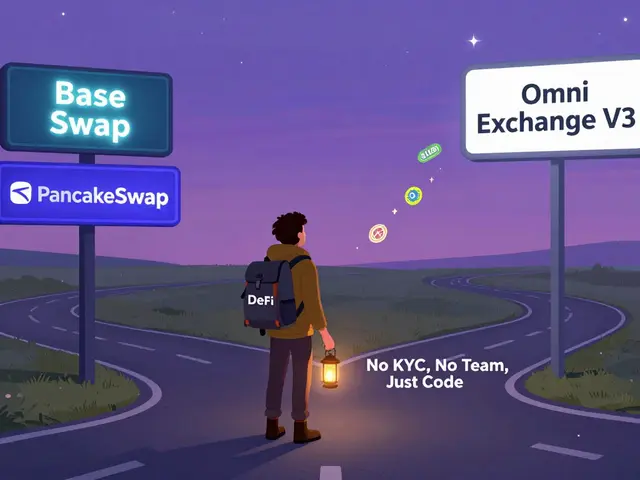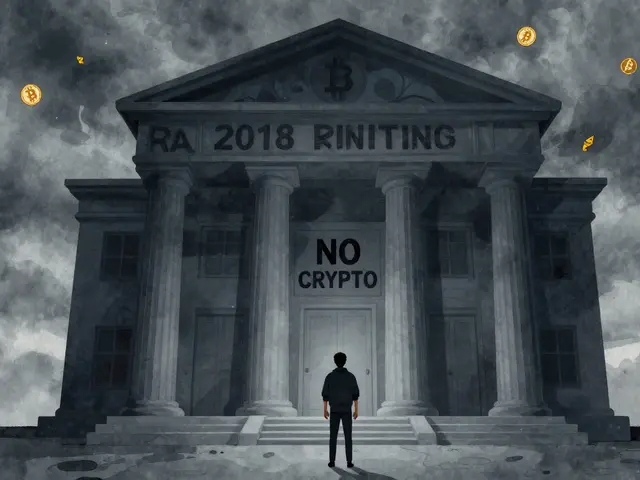DeFi – Your One‑Stop Hub for Decentralized Finance
When you hear DeFi, a set of blockchain‑based services that let you borrow, lend, trade or earn without banks. Also known as Decentralized Finance, it reshapes how money moves online.
At the core of DeFi are decentralized exchanges, platforms where users swap tokens peer‑to‑peer without a central custodian. These DEXs power yield farming, the practice of locking assets in smart contracts to earn interest or new tokens. To keep the whole system stable, many projects rely on stablecoins, cryptocurrencies pegged to a real‑world asset like the US dollar. Together, they create a self‑contained financial ecosystem that works 24/7.
How These Pieces Fit Together
DeFi encompasses yield farming because the latter uses smart contracts to allocate capital and generate returns. DeFi relies on decentralized exchanges to provide the liquidity needed for any farming strategy. Stablecoins enable low‑volatility trading pairs on DEXs, making it easier for newcomers to test the waters without facing wild price swings. In short, the three entities form a loop: DEXs feed farms, farms need stablecoins for safety, and stablecoins keep DEX markets calm.
Our collection below reflects this loop. You’ll find step‑by‑step airdrop guides that show how to claim free tokens, deep dives into specific DeFi projects like Ozonechain or XTUSD, and practical safety tips for navigating high‑risk farms. Whether you’re hunting a lucrative airdrop, comparing mining‑friendly countries, or learning why multisig wallets matter for DAO treasuries, the articles give you concrete actions you can take right now.
One recurring theme is risk management. Every DeFi protocol carries smart‑contract risk, price volatility, or regulatory uncertainty. Articles such as “XTUSD Stablecoin Explained” or “Why Multisig Wallets Are Essential for DAO Treasury Security” break down those risks into bite‑size checklists. By pairing theory with real‑world examples, the guides help you decide if a token’s potential reward outweighs its downside.
Another hot spot is geographic impact. Posts like “Top Crypto Mining‑Friendly Countries 2025 Ranking” and “How Bitcoin Adoption Is Helping Venezuela Survive the Economic Crisis” show how local policies shape DeFi adoption. Understanding the regulatory climate can save you from unexpected tax headaches or account freezes.
We also cover the tech side. The “Decentralized Identity 2025” article explains how verifiable credentials could become the new login for DeFi apps, while the “QuickSwap V3 (Manta) Review” walks through a zero‑fee DEX experience. These pieces give you a taste of emerging tools that might soon become standard in the DeFi toolbox.
And because airdrops remain a favorite way to earn free tokens, we’ve gathered multiple guides—VerseWar VERSE, CAKEBANK, WagyuSwap IDO, and more. Each guide walks you through eligibility checks, claim steps, and red‑flag warning signs, so you can spot a legit drop from a scam.
All that said, DeFi is still evolving. New protocols launch weekly, regulations shift, and market sentiment can change in minutes. The best way to stay ahead is to keep learning, test small amounts, and use the safety practices we outline. The articles below give you a solid foundation, plus the latest updates to keep your strategies fresh.
Ready to dive deeper? Browse the list of posts to discover practical tips, detailed analyses, and up‑to‑date news that will help you navigate the decentralized finance world with confidence.
Fly.trade (FLY) Coin: What It Is, How It Works, and Future Outlook
Explore Fly.trade (FLY) coin: its purpose, how the cross‑chain aggregator works, tokenomics, pros, cons, and future outlook for DeFi traders.
Uniswap V4 Review: Ethereum DEX Features, Gas Savings & BSC Misconception
Discover why Uniswap V4 runs only on Ethereum, its gas‑saving innovations, hook customization, and how it stacks up against PancakeSwap V4 on BSC.






